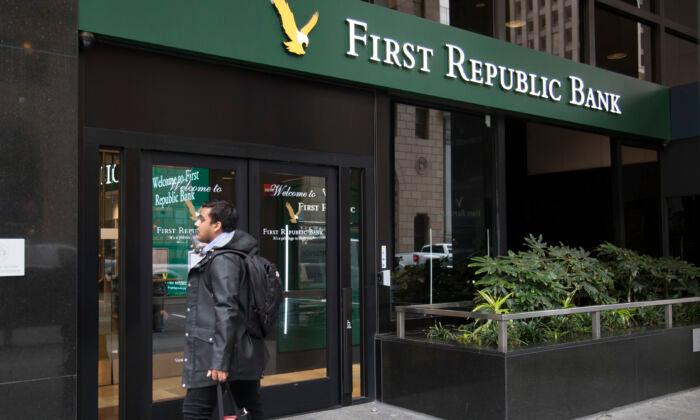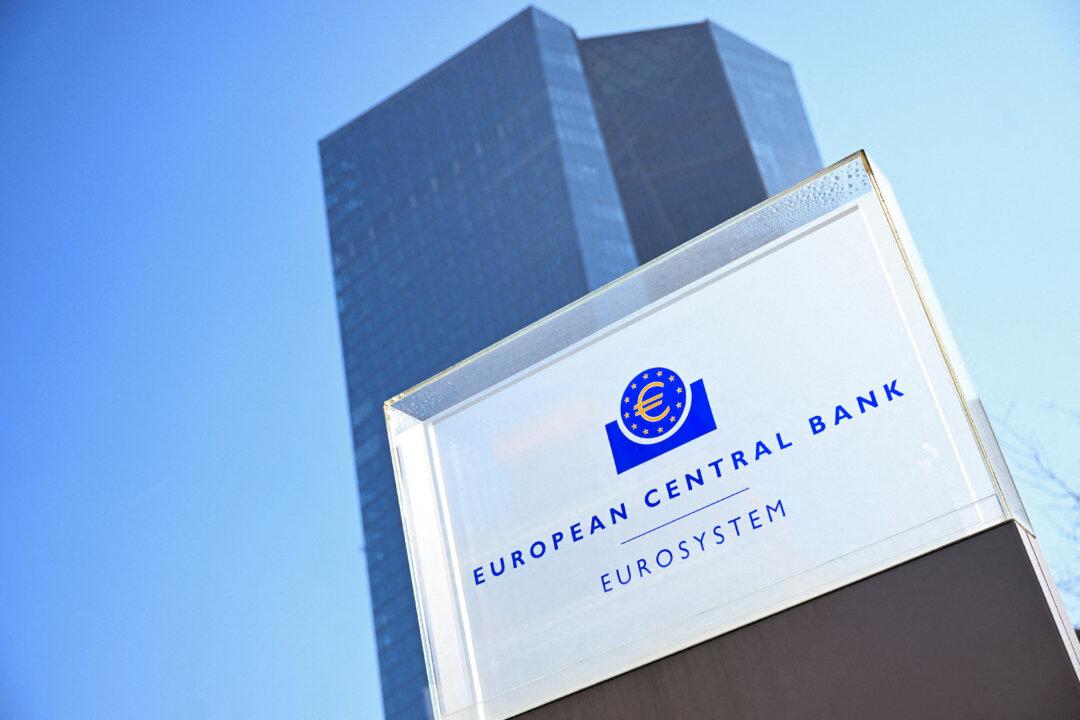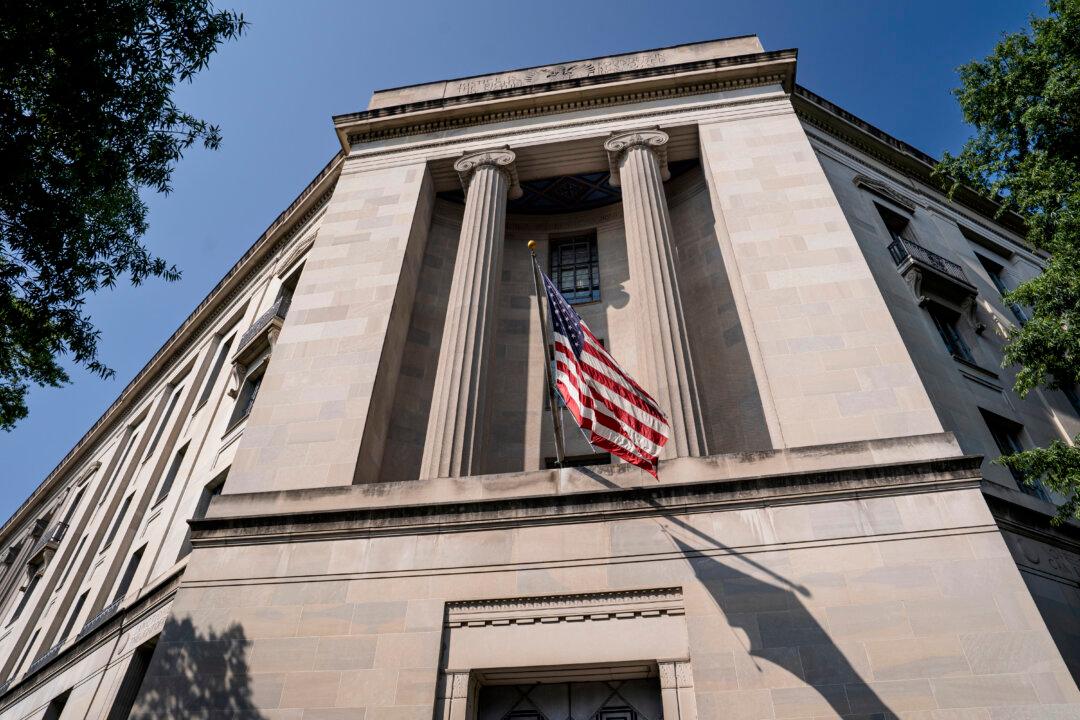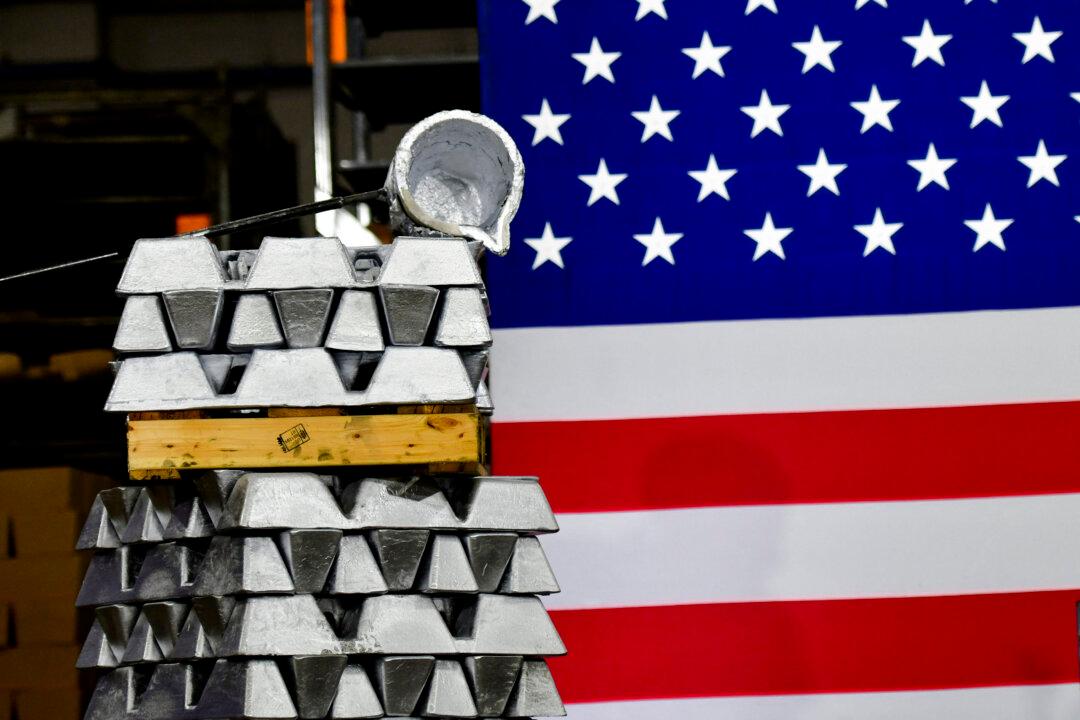First Republic Bank shares staged a sharp relief rally on April 27 as the beleaguered San Francisco-based lender fights for its survival and investors and customers consider what might be next.
Shares of First Republic rose more than 8 percent in volatile trading following a steep selloff earlier in the week that erased about 60 percent of the stock’s value, after the bank said its depositors had withdrawn more than $100 billion of their savings in the first quarter, in the wake of recent bank failures. The shares had jumped nearly 20 percent in early trading.
“With the closure of several banks in March, we experienced unprecedented deposit outflows,” Neal Holland, First Republic’s chief financial officer, said in the earnings report.
On March 9, a day before SVB failed, First Republic’s deposits stood at $173.5 billion, down 1.7 percent from year-end 2022.
But on March 10, as SVB’s collapse grabbed headlines, First Republic began experiencing an unprecedented run on its deposits that saw $101 billion in savings flee the bank through April 21.
“No bank on earth can survive if its customers pull their money out of the bank—especially if it happens all at once,” said Adam Sarhan, CEO of 50 Park Investments.
“If First Republic fails or is bailed out, that will likely cause more downward pressure on the already beaten-down financial sector.”
Word of the deposit exodus sent the bank’s stock to record lows, with its shares dropping 49 percent on April 25 and nearly 30 percent the next day.
“Investors got a sharp reminder on Tuesday that the U.S. banking crisis and broader credit crunch are not over,” Will Denyer of Gavekal Research wrote in an April 26 research note.
Amid the selloff, First Republic’s market capitalization hit a low of about $886 million on April 26, a stunning decline from its November 2021 peak of around $40 billion.
Fighting for Survival
In the face of fleeing deposits, First Republic was forced to borrow from federal programs to bolster its balance sheet.The bank said in its earnings report that its total borrowings peaked on March 15, at $138.1 billion. The interest rate the bank has to pay on those loans is considerably higher than what it pays on deposits, pressuring its bottom line.
“We moved swiftly and leveraged our high-quality loan and securities portfolios to secure additional liquidity. We are working to restructure our balance sheet and reduce our expenses and short-term borrowings,” Holland said in the report.
In a bid to bolster its balance sheet, First Republic said it plans to sell off unprofitable assets, including low-interest mortgages it provided to affluent customers. It also plans to lay off 20 to 25 percent of its workforce, which totaled around 7,200 employees at the end of 2022.
First Republic also plans to cut executive officer pay significantly while also slashing nonessential projects and reducing corporate office space. It also said it’s “pursuing strategic options,” which is Wall Street code that it’s looking for a white knight to swoop in for a rescue.
“There is some nervousness about how Silicon Valley Bank went down, and maybe they’d like to see if First Republic can work out its problems itself,” Stephen Lubben, a professor at Seton Hall University School of Law, told Bloomberg.
“Regulators are also probably worried that if this does not stop, who is next?” he added. “That is, who comes after the First Republic on the hot seat?”
Where Do Things Go From Here?
There are a few possibilities for what happens next for the beleaguered lender, which continues to operate amid the turmoil. One possibility is that the bank proceeds with the steps it has outlined to bolster its balance sheet, continuing to run its business in hopes of eventually pulling up out of its nosedive.That’s option No. 1 for First Republic CEO Michael Roffler, who said in the earnings report that deposits have stabilized and the bank remains “fully committed” to serving its customers.
“With the stabilization of our deposit base and the strength of our credit quality and capital position, we continue to take steps to strengthen our business,“ he said. ”We remain fully committed to serving our communities, and we are grateful for the ongoing support of our clients and colleagues.”
While staying the course is likely to mean a long and grueling road, First Republic appears to have enough liquidity to continue operating for some time. It said in its report that its available liquidity—$45.1 billion in cash and unused borrowing capacity—is more than twice its uninsured deposits (excluding the $30 billion uninsured deposit infusion by big banks).
Another possibility, experts say, is that First Republic could sell some of its assets to other banks at above market value, with First Republic sweetening the deal by giving the buyers preferred equity.
Bloomberg reported that advisers working for First Republic were proposing a similar idea, in which stronger banks would buy bonds at above market value so that First Republic could issue more shares.
Finally, there’s the possibility that, as with SVB and Signature, the Federal Deposit Insurance Corp. might place First Republic into receivership and carry out a resolution, making depositors whole and slowly selling off its assets to maximize recoveries for shareholders and debt holders.
First Republic officials didn’t respond by press time to a request by The Epoch Times for comment.





